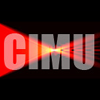|
Gilles Thomas Research Scientist/Engineer - Senior gthomas@apl.washington.edu Phone 206-221-4590 |
Department Affiliation
 |
Center for Industrial & Medical Ultrasound |
Education
M.S. General Engineering, Ecole Centrale de Nantes, 2014
M.S. Mechatronic Engineering, Universidade de Sao Paulo, 2014
M.S. Mechatronic Engineering, Universidade de Sao Paulo, 2015
Ph.D. Biomedical Engineering, Universite Lyon, 2019
|
Publications |
2000-present and while at APL-UW |
Advancing boiling histotripsy dose in ex vivo and in vivo renal tissues via quantitative histological analysis and shear wave elastography Ponomarchuk, E., G. Thomas, M. Song, Y.-N. Wang, S. Totten, G. Schade, J. Thiel, M. Bruce, V. Khokhlova, and T. Khokhlova, "Advancing boiling histotripsy dose in ex vivo and in vivo renal tissues via quantitative histological analysis and shear wave elastography," Ultrasound Med. Biol., 50, 1936-1944, doi:10.1016/j.ultrasmedbio.2024.08.022, 2024. |
More Info |
1 Dec 2024 |
|||||||
|
Objective |
|||||||||
Development of an automated ultrasound signal indicator of lung interstitial syndrome Khokhlova, T.D., G.P. Thomas, J. Hall, K. Steinbock, J. Thiel, B.W. Cunitz, M.R. Bailey, L. Anderson, R. Kessler, M.K. Hall, and A.A. Adedipe, "Development of an automated ultrasound signal indicator of lung interstitial syndrome," J. Ultrasound Med., EOR, doi:10.1002/jum.16383, 2023. |
More Info |
5 Dec 2023 |
|||||||
|
The number and distribution of lung ultrasound (LUS) imaging artifacts termed B-lines correlate with the presence of acute lung disease such as infection, acute respiratory distress syndrome (ARDS), and pulmonary edema. Detection and interpretation of B-lines require dedicated training and is machine and operator-dependent. The goal of this study was to identify radio frequency (RF) signal features associated with B-lines in a cohort of patients with cardiogenic pulmonary edema. A quantitative signal indicator could then be used in a single-element, non-imaging, wearable, automated lung ultrasound sensor (LUSS) for continuous hands-free monitoring of lung fluid. |
|||||||||
Enhancement of boiling histotripsy by steering the focus axially during the pulse delivery Thomas, G.P.L., T.D. Khokhlova, O.A. Sapozhnikov, and V.A. Khokhlova, "Enhancement of boiling histotripsy by steering the focus axially during the pulse delivery," IEEE Trans. Ultrason. Ferroelectr. Freq. Control, 70, 865-875, doi:10.1109/TUFFC.2023.3286759, 2023. |
More Info |
1 Aug 2023 |
|||||||
|
Boiling histotripsy (BH) is a pulsed high-intensity focused ultrasound (HIFU) method relying on the generation of high-amplitude shocks at the focus, localized enhanced shock-wave heating, and bubble activity driven by shocks to induce tissue liquefaction. BH uses sequences of 1–20 ms long pulses with shock fronts of over 60 MPa amplitude, initiates boiling at the focus of the HIFU transducer within each pulse, and the remainder shocks of the pulse then interact with the boiling vapor cavities. One effect of this interaction is the creation of a prefocal bubble cloud due to reflection of shocks from the initially generated mm-sized cavities: the shocks are inverted when reflected from a pressure-release cavity wall resulting in sufficient negative pressure to reach intrinsic cavitation threshold in front of the cavity. Secondary clouds then form due to shock-wave scattering from the first one. Formation of such prefocal bubble clouds has been known as one of the mechanisms of tissue liquefaction in BH. Here, a methodology is proposed to enlarge the axial dimension of this bubble cloud by steering the HIFU focus toward the transducer after the initiation of boiling until the end of each BH pulse and thus to accelerate treatment. A BH system comprising a 1.5 MHz 256-element phased array connected to a Verasonics V1 system was used. High-speed photography of BH sonications in transparent gels was performed to observe the extension of the bubble cloud resulting from shock reflections and scattering. Volumetric BH lesions were then generated in ex vivo tissue using the proposed approach. Results showed up to almost threefold increase of the tissue ablation rate with axial focus steering during the BH pulse delivery compared to standard BH. |
|||||||||




